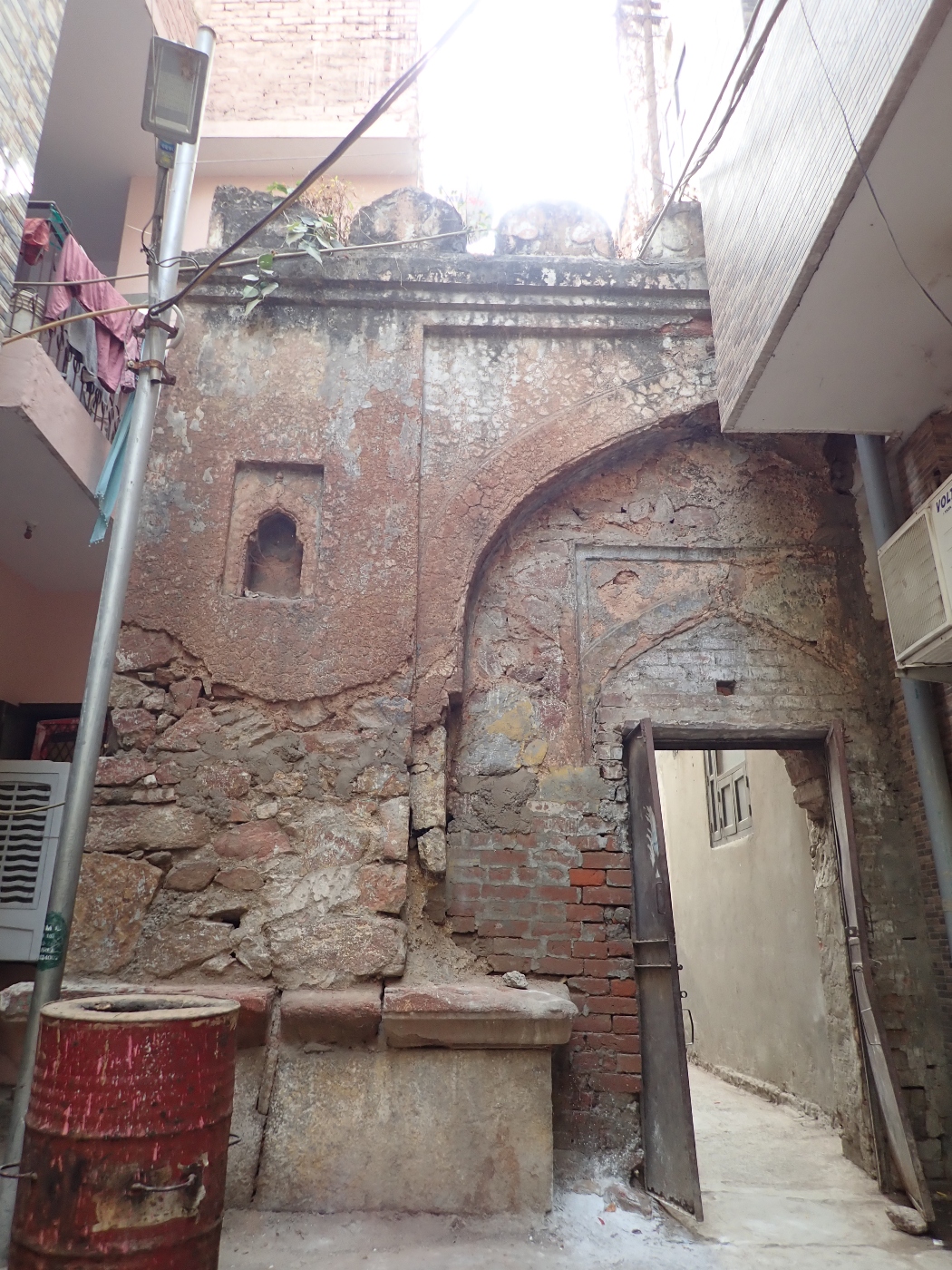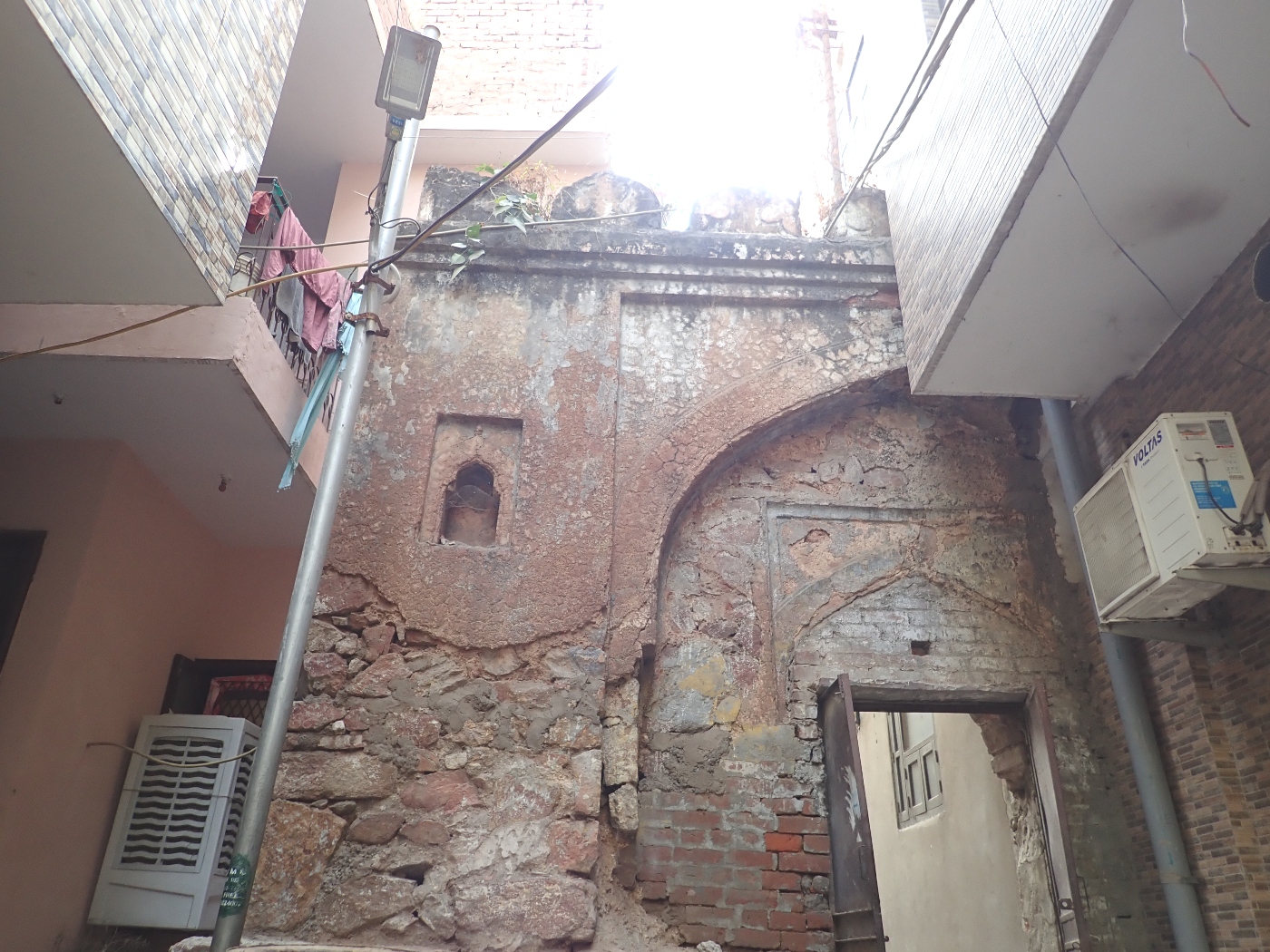

The structure, dating back to the medieval period, is associated with the legacy of Nasiruddin Mahmud Chiragh Dehlavi, also known as Chiragh-e-Delhi, born around 1274 in Ayodhya, Uttar Pradesh. Reflecting the Indo-Persian architectural style, the gateway once stood as a significant historical feature but has since been partially demolished and encroached upon. Only half of the original gateway remains intact. The surviving portion features a double-arched entrance and a niche on its right side. Notable elements of its design include the Kangoora battlements adorning the top of the gateway. Over time, modern alterations have altered the original structure, with bricks, cement, and an iron gate added later. Constructed using rubble stone masonry and lime mortar, the gateway was originally plastered with lime, which still covers parts of the structure. These changes, while contributing to its present state, underscore the need for preserving its historical essence amidst encroachments and modern interventions.